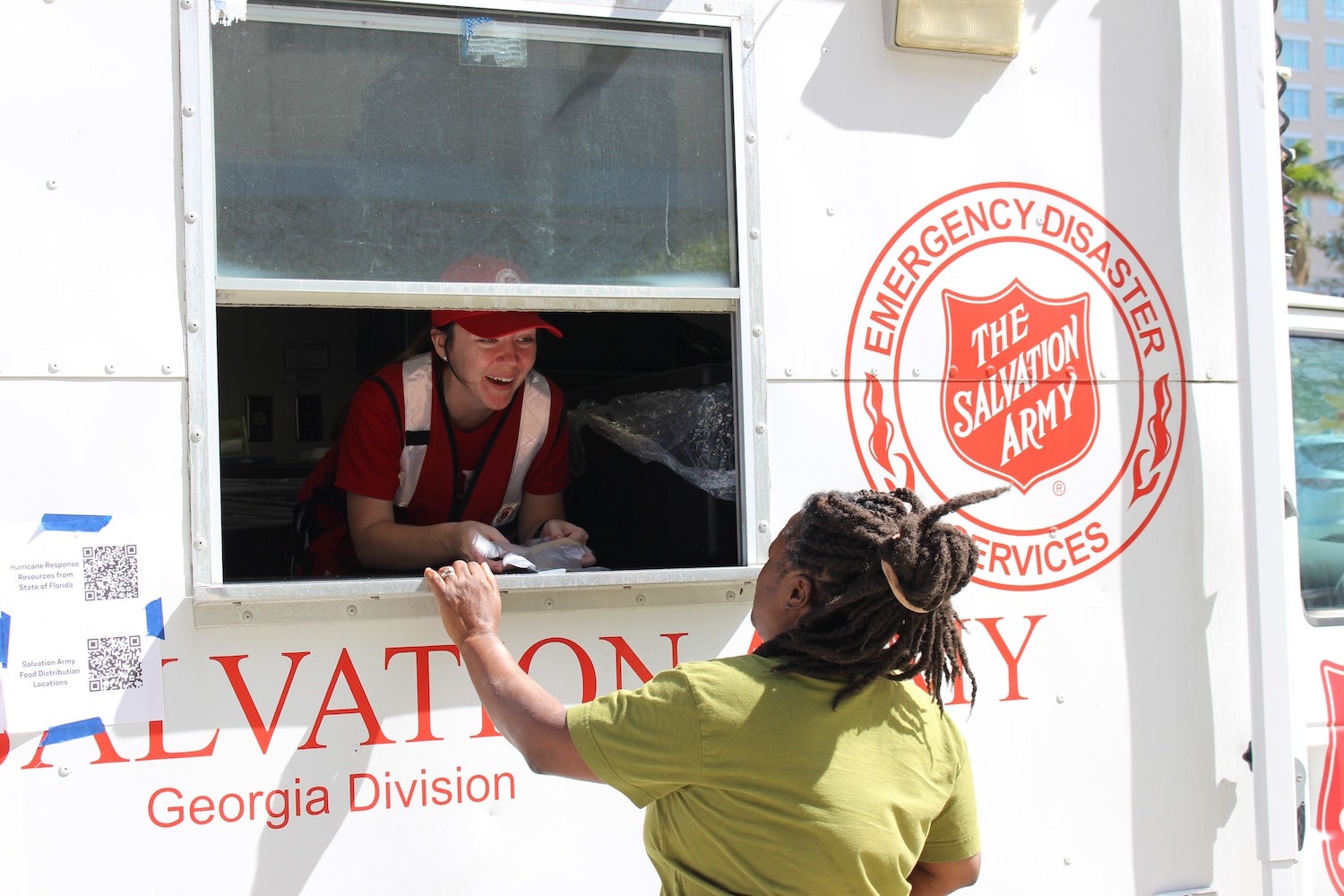Human Trafficking Response Training Provided for EDS Personnel
By Kristin Mudge /

The Salvation Army Southern Territory is always working to bridge gaps, seeking to serve people even at their most vulnerable. And now that effort includes providing training and resources to Emergency Disaster Services (EDS) personnel and volunteers on the high possibility of human trafficking directly following disasters.
“Traffickers, predators, people who are trying to survive do exploit vulnerabilities, specifically after people have lost everything,” Sheena Evans, territorial services coordinator against human trafficking, explains. This fact is true year-round, but in the field of human trafficking response work, people have begun to notice a significant gap in coverage for vulnerabilities survivors experience post-disaster.
Sheena explains that the South has some of the highest poverty rates in the United States. “Because trafficking already follows poverty, if people are trying to survive, the compound of a natural disaster is just loaded with vulnerable people and people who want to exploit that.” Adding a geographical component which includes seasonal hurricanes and frequent flooding, the Southern Territory is the most susceptible to natural disasters and holds some of the most vulnerable populations in the U.S.
Forced labor trafficking is one of the highest forms of exploitation seen directly following a disaster. “Psychologically what happens to the brain when there’s grief and immediate loss, you’re just not thinking clearly,” Sheena explains. So, when a disaster survivor sees a job opening, for example, they may not be able to think through the safety or legitimacy of that organization. “You just think, ‘I need to survive. We need to eat.’” Suddenly a worker will realize their “employer” is holding their ID and documents, then perhaps they stop receiving payment for their work. “You find yourself in a trafficking situation; you’re being exploited.”
In accordance with the global initiative from International Headquarters, one of the National Anti-Human Trafficking Committee’s strategic planning initiatives involves partnering with EDS to address these concerns.
In July, Sheena led a first-of-its-kind online seminar in conjunction with EDS to provide training on human trafficking response preparedness, recognition, and resources for disaster workers and volunteers. Preparation includes working to safeguard communities by addressing vulnerabilities ahead of time and partnering with other organizations in the area. For recognition, she explained what trafficking is, then walked participants through a couple of case studies from past disaster responses. Through these stories she highlighted red flags and possible indicators of trafficking. She then provided a wealth of resources for further education and outreach.
Bobbi Geery, territorial EDS disaster operations and deployment manager, comments on the importance of this partnership saying, “EDS has the privilege of walking alongside people who may have just experienced the worst day or even days of their lives. By equipping our disaster workers with knowledge, information, and resources regarding human trafficking, we may be able to indirectly assist survivors who may find themselves in a worse situation.”
This training has sparked additional trainings across several U.S. territories that will happen in collaboration with EDS in the future. Additional human trafficking response resources are also being added to the EDS training catalog. There are also plans for every disaster canteen to be equipped with a fact sheet, rapid response tools, and other important human trafficking response resource materials.
“In order for the community to be empowered and be aware, we have to talk about it,” Sheena urges. More information on human trafficking response and EDS services can be found on ministrytoolkit.org and salarmyeds.org.